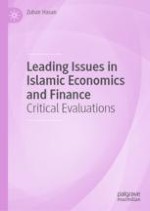2020 | OriginalPaper | Buchkapitel
10. The Basel Accords and Islamic Banks
verfasst von : Zubair Hasan
Erschienen in: Leading Issues in Islamic Economics and Finance
Verlag: Springer Singapore
Aktivieren Sie unsere intelligente Suche, um passende Fachinhalte oder Patente zu finden.
Wählen Sie Textabschnitte aus um mit Künstlicher Intelligenz passenden Patente zu finden. powered by
Markieren Sie Textabschnitte, um KI-gestützt weitere passende Inhalte zu finden. powered by
